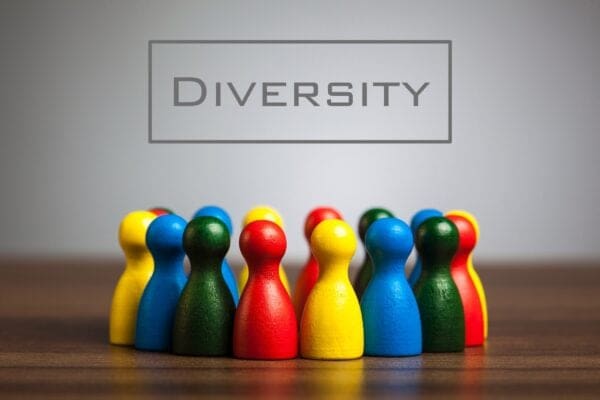Your Ultimate Facts Sheet for Employee Relations
Employee relations play a critical role in shaping the work environment, shaping employee morale and performance, and influencing the success of a company. In today’s rapidly evolving business landscape, companies are increasingly recognising the importance of investing in their employees and fostering positive, productive, and supportive workplace relationships.
From promoting open communication and trust between employees and management to providing opportunities for growth and development. Effective employee relations are essential for cultivating a motivated, engaged, and productive workforce.
Whether you’re an HR professional looking to improve your organisation’s employee relations, or an employee looking to better understand the complexities of the workplace, this article will provide you with valuable insights and practical advice. So sit back, relax, and get ready to delve into the fascinating world of employee relations.
What is Meant by “Employee Relations”?
Employee relations refer to the relationships and interactions between employees and their employer or management. It encompasses a wide range of workplace issues and covers various aspects of the employment experience, from recruitment and onboarding to ongoing employee development, motivation, and satisfaction.

Effective employee relations are essential for the success of any organisation. A positive work environment can lead to increased employee engagement and motivation, which can, in turn, result in higher levels of job satisfaction and improved performance. On the other hand, poor employee relations can have a negative impact on the workplace, leading to low morale, increased absenteeism, and higher turnover rates.
Employee relations involve a range of activities, including communication, conflict resolution, and benefits and perks programs. The keys to strong employee-management relationships are regular feedback/recognition, dialogue, and conflict resolution. Employee relations improved by benefits/perks (flexibility, wellness programs) are a critical component of success so approach with care for a positive work environment.
Types of Employee Relations (ER)
Internal Employee Relations
Focuses on the relationships between employees and their managers, co-workers, and the organisation as a whole. Addresses issues such as communication, teamwork, conflict resolution, and employee engagement. Promotes a positive work environment, high employee morale, and increased productivity.
Sticky Learning ® is 7 times more effective than 1-day training courses. Plus, you will get a Chain of Evidence proving your Return on Investment. Discover soft skills training that changes behaviours long term.

External Employee Relations
Focuses on the relationships between the organisation and external stakeholders, such as customers, suppliers, and the wider community. Addresses issues such as reputation management, community engagement, and corporate social responsibility. Promotes the organisation’s positive image, enhances brand reputation and supports sustainable business practices
Industrial Relations
Focuses on the relationships between employees, their unions, and the organisation. It addresses issues such as collective bargaining, strikes, and workplace disputes. Additionally, it promotes fair and equitable treatment of employees, supports collective bargaining, and helps to resolve workplace disputes
Employee Engagement
Focuses on improving employee morale, motivation, and commitment to the organisation. It addresses issues such as employee satisfaction, employee involvement, and employee development. On the same note, it promotes a positive work environment, increased employee engagement, and improved employee performance.
What Are the 5 Dimensions of ER?

1. Communication and Transparency
Communication is a key aspect of employee relations and plays a crucial role in shaping the work environment. In order to foster a positive workplace culture, it is important for employers to be transparent and open in their communication with employees. This includes providing regular feedback, sharing information about the company’s goals and plans, and encouraging employees to voice their opinions and concerns. Effective communication helps to build trust between employees and management and fosters a culture of collaboration and teamwork.
2. Employee Engagement and Satisfaction
Employee engagement and satisfaction are two important indicators of a positive work environment. Engaged employees are more productive, motivated, and committed to their work, which can have a positive impact on the company’s bottom line. On the other hand, disengaged employees are more likely to be absent, and have low morale and turnover. Therefore, it is important for employers to invest in programs and initiatives that promote employee engagement and satisfaction, such as flexible work arrangements, health and wellness programs, and opportunities for career development.
3. Employee Benefits and Perks
Benefits and perks programs can play a critical role in shaping employee relations and improving employee satisfaction. Offering a comprehensive benefits package that includes health insurance, paid time off, and retirement benefits can help to attract and retain top talent and promote employee wellbeing. Additionally, offering perks such as flexible work arrangements, telecommuting options, and wellness programs can help to improve work-life balance and support employee engagement and satisfaction.
4. Conflict Resolution and Grievance Handling
Conflict is a natural part of any workplace, and it is important for employers to have processes in place to address and resolve workplace issues in a constructive and timely manner. This can include mediation, counselling, or formal grievance procedures. Effective conflict resolution and grievance handling can help to maintain a positive work environment and prevent small issues from becoming major problems. It is also important for employers to provide training and resources to help employees develop the skills needed to effectively manage conflict and resolve workplace disputes.
5. Employee Development and Training
Providing opportunities for employee development and training is essential for promoting employee satisfaction and engagement. This can include in-house training programs, tuition reimbursement, and professional development opportunities. By investing in employee development, companies can help to build a highly skilled and motivated workforce and support the long-term success of the organisation.
How to Boost ER?

Encourage Open Communication:
- Regularly conduct employee surveys to gather feedback and opinions.
- Provide opportunities for employees to voice their opinions and concerns.
- Encourage open dialogue and provide a safe and supportive environment for employees to share their thoughts.
- Foster an environment where employees feel comfortable asking questions and seeking. clarification.
- Regularly provide feedback and recognition to employees.
Promote Employee Engagement:
- Encourage employees to take an active role in their own professional development.
- Provide opportunities for employees to contribute their ideas and suggestions.
- Offer flexible work arrangements to support work-life balance.
- Offer health and wellness programs to promote employee well-being.
- Regularly recognise and reward employee achievements and contributions.
Invest in Employee Benefits and Perks:
- Provide a comprehensive benefits package that includes health insurance, paid time off, and retirement benefits.
- Offer flexible work arrangements, such as telecommuting options and flexible schedules.
- Offer wellness programs and incentives to promote healthy behaviours.
- Provide opportunities for professional development and training.
- Offer employees discounts and other benefits to show appreciation for their work.
Address Conflicts Constructively:
- Encourage employees to communicate and address workplace issues promptly.
- Provide training and resources to help employees effectively manage conflict.
- Implement a formal grievance process to address workplace issues.
- Encourage mediation and counselling as a way to resolve workplace disputes.
- Foster an environment where employees feel safe to raise issues and conflicts are addressed in a constructive and timely manner.
Invest in Employee Development:
- Provide opportunities for professional development and training.
- Offer tuition reimbursement for relevant coursework.
- Encourage employees to take an active role in their own professional development.
- Provide mentorship and coaching programs.
- Regularly evaluate employee skills and performance and provide opportunities for growth and advancement.
What is the Importance of Good Employee Relations?
Good employee relations are crucial for any organisation to achieve its goals and objectives. They foster a positive work environment where employees feel valued, supported and motivated, leading to increased job satisfaction and productivity. A company with good employee relations has employees who are engaged, dedicated, and committed to their work, and this ultimately translates into better business performance.

Increased Employee Morale
One of the main benefits of good employee relations is increased employee morale. When employees feel that their opinions, contributions and concerns are valued, they are more likely to be satisfied with their work, which leads to higher motivation and engagement levels. This can also increase employee loyalty, reducing turnover and absenteeism, and leading to greater stability and continuity in the workplace.
Better Decision-making
Good employee relations also play a crucial role in promoting a culture of open communication and transparency. This can lead to better problem-solving and decision-making, as employees are encouraged to provide feedback and suggestions, and management is more receptive to them. With good employee relations, employees are more likely to be proactive in identifying problems and contributing to solutions, leading to a more efficient, effective and resilient organisation.
Employee Relations Examples
1. Employee Engagement Programs
These engagement programs are a key aspect of good employee relations. These programs aim to increase employee involvement, motivation, and commitment. Examples of employee engagement programs include regular feedback and recognition programs, and training and development opportunities. By promoting employee engagement, companies can improve employee morale, build a strong sense of community, and enhance overall job satisfaction.
2. Employee Communication
Effective communication is essential for good employee relations. This includes both top-down communication. Regular updates from management, and bottom-up communication, such as regular employee feedback and suggestions. Companies can also encourage open and transparent communication by fostering an inclusive culture.
3. Employee Benefits and Perks
Offering competitive benefits and perks is another key aspect of good employee relations. These benefits can range from traditional benefits such as health insurance and retirement plans to more innovative benefits such as flexible work arrangements, paid time off for volunteer work, and wellness programs. Companies can also offer employee perks such as free snacks, a casual dress code, and flexible hours. By offering competitive benefits and perks, companies can demonstrate that they value their employees and are committed to promoting their well-being, leading to increased job satisfaction and employee loyalty.
4. Employee Recognition and Rewards
Employee recognition and rewards are important for good employee relations, as they help to increase employee motivation, engagement, and morale. Companies can recognise and reward employees in many different ways, including performance bonuses, employee-of-the-month awards, and opportunities for professional development. Companies can also recognise and reward employees for their contributions to the company’s mission and values, such as teamwork, innovation, and customer service. By recognising and rewarding employees, companies can demonstrate their appreciation for their hard work and contributions, leading to increased employee engagement and motivation.
Is ER the Same as HR?

Definition of ER and HR
Employee relations and Human Resources (HR) are related but distinct areas within an organisation. Employee relations refers to the relationship between employees and management and encompasses a wide range of activities aimed at promoting positive relationships, resolving conflicts, and fostering a positive work environment. HR, on the other hand, encompasses a broader range of activities related to human capital management, including talent acquisition, performance management, compensation and benefits, and compliance with labour laws.
HR Responsibilities vs. Employee Relations
Employee relations activities often fall within the purview of HR, but the focus of employee relations is specifically on the relationship between employees and management, while HR has a broader focus that encompasses all aspects of human capital management. Employee relations activities can include conflict resolution, employee engagement, employee recognition and rewards, and communication initiatives, while HR activities may include talent acquisition, performance management, and compensation and benefits management.
Importance of ER and HR
Both employee relations and HR are critical for organisations, as they play a key role in attracting, retaining and motivating employees, as well as ensuring compliance with labour laws and regulations. Effective employee relations can help to foster a positive work environment, improve employee morale, increase engagement and motivation, and reduce conflicts and turnover. On the other hand, effective HR practices can help organisations attract and retain top talent, improve performance, manage compensation and benefits, and comply with labour laws and regulations.
Interdependence of ER and HR
Although employee relations and HR are distinct areas, they are closely interrelated and often overlap. Employee relations activities, such as employee engagement and recognition, can help to create a positive work environment that supports HR activities, such as performance management and talent acquisition. At the same time, effective HR practices, such as talent acquisition and compensation management, can help to attract and retain employees, which is critical for promoting positive employee relations.
Conclusion

In conclusion, employee relations play a crucial role in promoting positive relationships and a positive work environment within an organisation. Furthermore, effective employee relations initiatives such as employee engagement programs, effective communication, competitive benefits and perks, and employee recognition and rewards can improve employee morale, engagement, and motivation. On the other hand, poor employee relations can lead to conflicts, decreased job satisfaction, and high turnover rates.
I am sure you will agree organisations must prioritise employee relations and continuously strive to improve relationships between employees and management. Follow our Linkedin page and never miss another helpful people management article.




